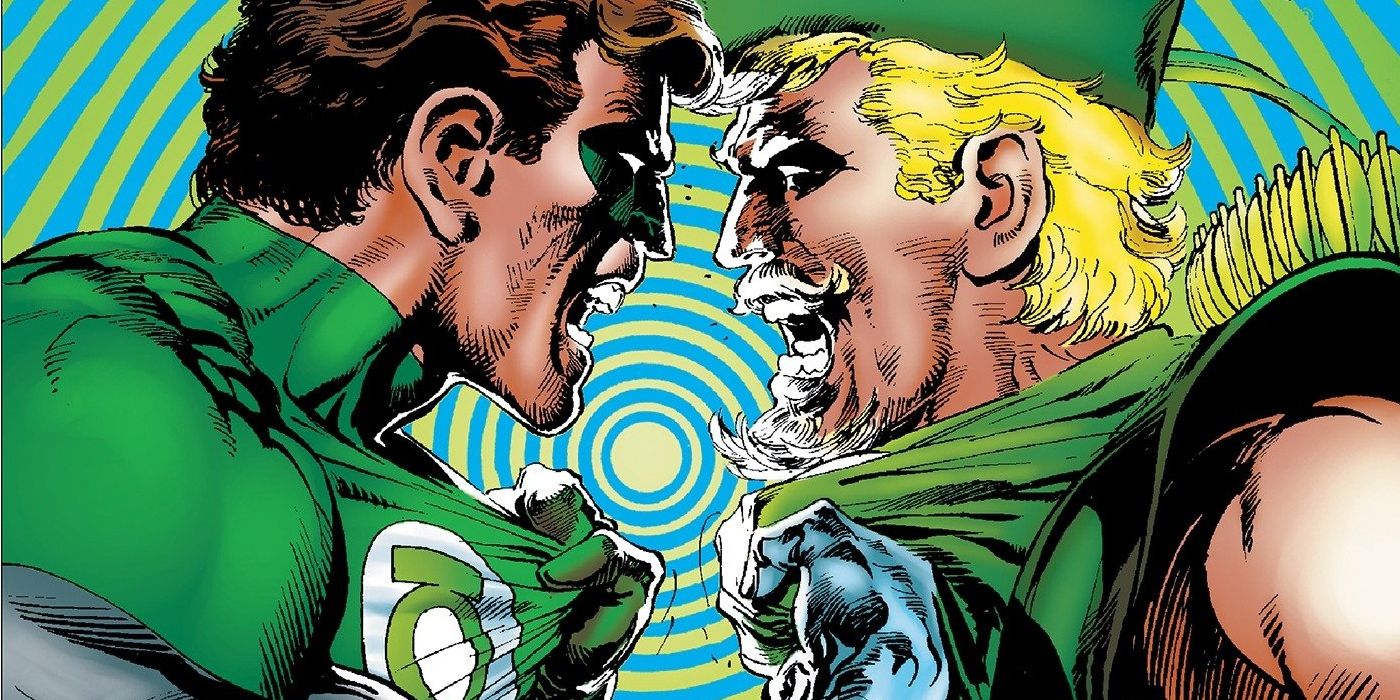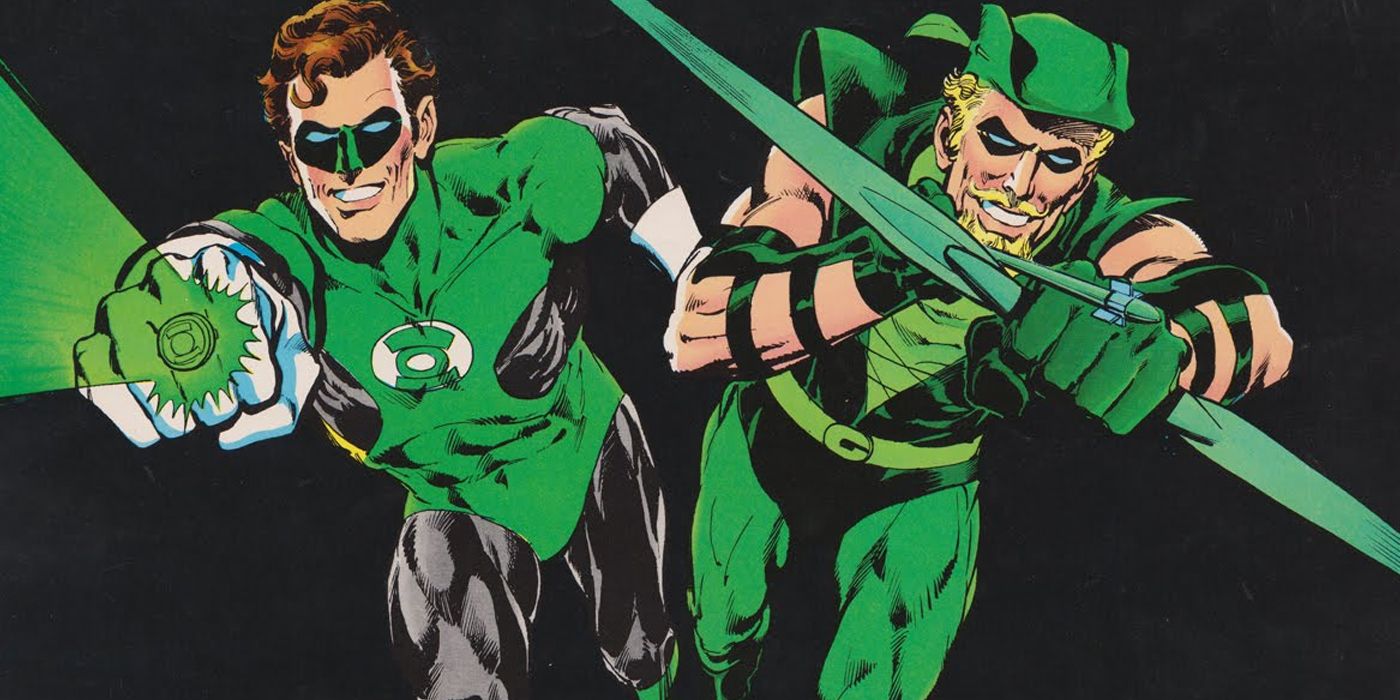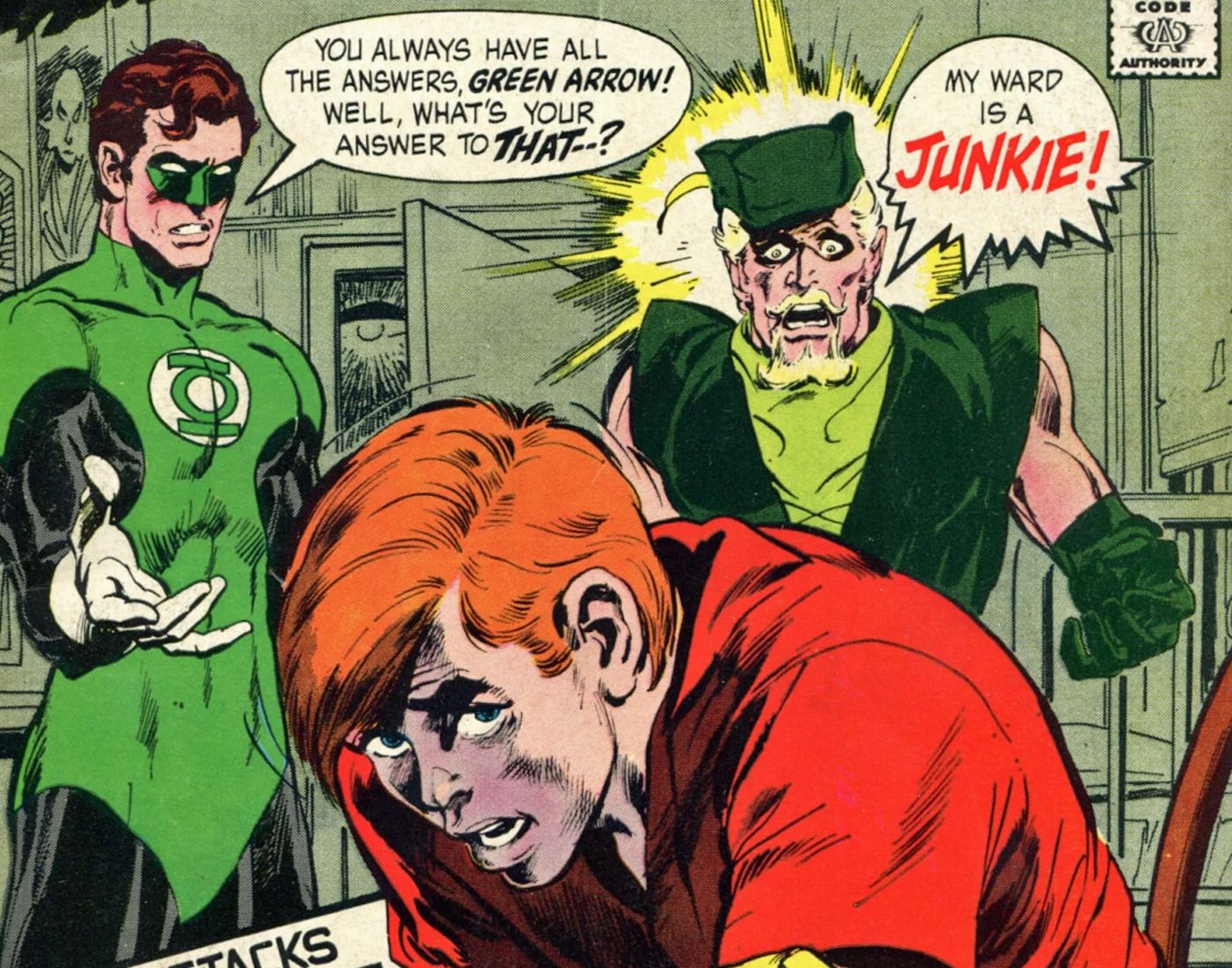Throughout his illustrious career as a writer and editor, the late Denny O'Neil was known mainly for his work at DC Comics, where he had a hand in writing comics for Wonder Woman, The Question and Batman, who returned to his dark, Gothic roots and met classic villains like Ra's al Ghul under the pen of O'Neil and his frequent collaborator Neal Adams. But beyond Batman, the major DC superhero that O'Neil had the biggest impact on was Green Arrow.
In the early years after he was created by Mort Weisinger and George Papp, the Emerald Archer was essentially bow-wielding Batman, but O'Neil and Adams both broke him down to lift him up to new heights, forever changing the archer from Star City.
After Bob Haney and Neal Adams introduced Green Arrow's iconic costume in The Brave and the Bold #85, O'Neil's redefinition of the Green Arrow character began in his and Dick Dillin's Justice League of America #75, where the character began his longstanding romance with Black Canary. Through an unscrupulous business partner's misdeeds, Oliver Queen -- once a financial contemporary of Bruce Wayne -- lost his vast fortune. The ensuing adventure had him coming to grips with the greed and thrill that he sought out in his former life as a billionaire vigilante, as he defended a small business owner from his own inner demons. Oliver Queen would then go on to become a co-star in Green Lantern, and starting with Green Lantern #76, the Denny O'Neil and Neal Adams helmed title was renamed Green Lantern/Green Arrow. This title philosophically pitted the stick-in-the-mud space cop Green Lantern against a completely revamped, far more liberal Green Arrow. No longer just another rich guy moonlighting as a brooding vigilante, Oliver now waxed poetic about the various woes of the world, all while chastising Green Lantern for seemingly ignoring them.
From then on, Green Arrow was the unquestioned voice of the streets, taking Hal Jordan to task over his relatively conservative mentality as the two tried to confront America's social ills. These stories, published in the early 1970s, were incredibly radical for their time, especially for DC. When compared to the more rounded characters at Marvel, DC's heroes were typically seen as interchangeable in all but power set. These mostly grounded stories -- which gave their dual protagonists very noticeable political definitions -- did so by presenting topics and issues rarely addressed within superhero comic books up until this point. Green Arrow was not only the sole political DC hero, but perhaps the only major hero with such defined opinions in comics as whole.
While the "Hard Travelin' Heroes" run had the tendency to demonize Green Lantern in order to present Green Arrow as the liberal voice of reason, O'Neil and Adams also established Oliver Queen's pompous hypocrisy in one of the most important comic books of all time. In the infamous Green Lantern/Green Arrow #85, it was revealed that in Green Arrow's hard-traveling absence, his sidekick Speedy turned to drugs in order to quell his own loneliness and disillusionment. The progressive and understanding Green Arrow, instead of consoling and trying to help his sidekick, violently lashed out at him. This showcased the dark side of Oliver's self-righteousness, placing him on the wrong side of an issue. For once, the relatively conservative Green Lantern tried to help Roy Harper. Where this might be glossed over with other characters, Oliver's hypocrisy and sanctimony were rightly called out. Along with the fact that he spent much of the arc with his broken arm in a sling, this showed how much more human and fallible O'Neil and Adams made Green Arrow.
Roy and Oliver's relationship would change dramatically afterwards, presenting one of the first times in which a superhero and his sidekick had a clear falling out. This would define their relationship for years, and the begrudging partnership between Hal and Ollie would similarly develop into one of comics' best friendships. Since then, the political overtones that O'Neil and Adams brought into this run have become synonymous with Green Arrow, as has his looking out for the little guy. Mike Grell's renowned run on Green Arrow, which was firmly planted within a grounded, realistic world, had the character dealing with all manner of then-current social issues that were otherwise ignored in the medium.
From Oliver Queen's interest in keeping DC's heroes focused on the most vulnerable people in Justice League Unlimited to Oliver Queen's political aspirations on Arrow, parts of the character, Green Arrow still bears marks of this character-defining run. Oliver Queen may have forged himself into Green Arrow on a deserted island, but O'Neil and Adams' run molded him into the hero he is today.



